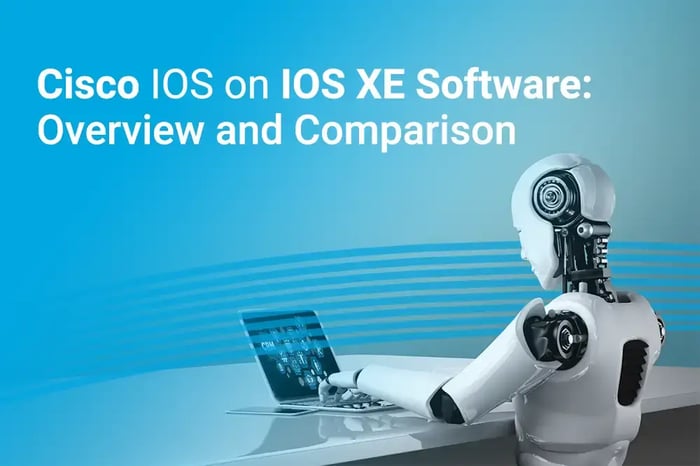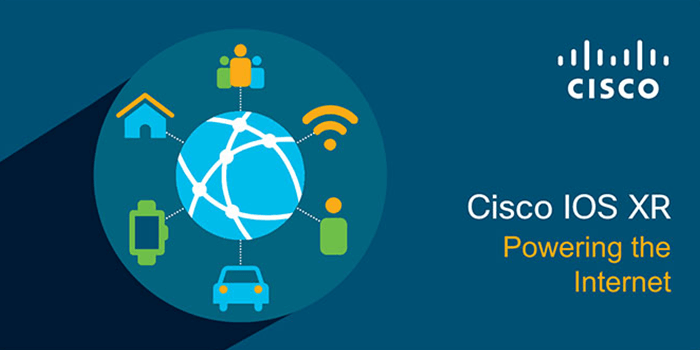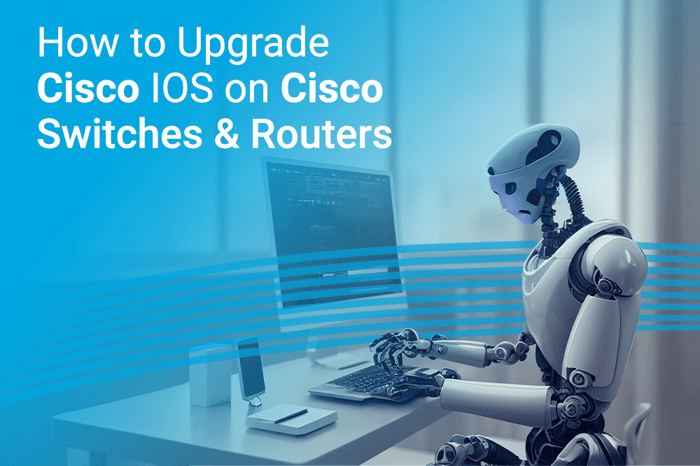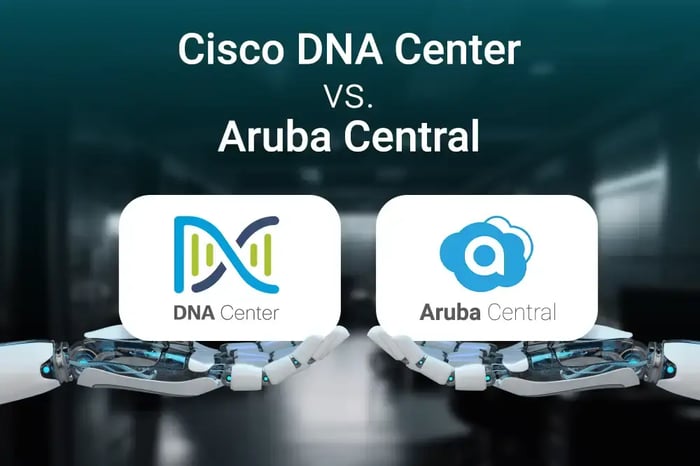You have no items in your shopping cart.

Cisco IOS and IOS XE Software: Overview and Comparison
This article will dive deep into Cisco IOS software, the feature-rich operating system. We will cover the key features of Cisco IOS, IOS XE, and Cisco IOS XR & NX OS.
Cisco Internetwork Operating System or IOS is a powerful operating system developed by Cisco Systems for networking devices like routers and switches. It serves as the foundation for routing, switching, and security functions on Cisco devices. It provides a comprehensive and reliable platform for network administrators to get holistic control and view of the network system.
Cisco IOS (Internetwork Operating System) is a proprietary operating system used by Cisco Appliances. Cisco IOS and Cisco IOS-XE later became the baseline standard for the network switching industry. This indeed forced other brands to re-innovate and redesign their operating systems for routers and switches.
Fundamentals of Cisco IOS
Cisco IOS software is essential for Cisco networking devices, enabling admins to efficiently control, manage, monitor, and troubleshoot complex networks. It possesses a modular architecture that enables administrators to select specific features depending on the requirements of their network infrastructure. One of the core functionalities of Cisco IOS is routing and switching, which allows devices to forward data packets between networks and within a local network.
It can use different routing protocols like RIP, OSPF, and BGP so that administrators can choose the best one for their network. Cisco IOS is also secure as It provides numerous security features, such as access control lists (ACLs), virtual private networks (VPNs), and firewalls, to ensure the integrity and confidentiality of the network.

Cisco IOS Features:
The IOS operating system is designed to offer a modular and scalable architecture, enabling network administrators to add or remove features without affecting the overall system. It follows a hierarchical structure consisting of multiple layers, such as the kernel, shell, and applications. This modular design allows for flexibility and facilitates easy integration of new technologies.
Cisco IOS employs a powerful command line interface built and runs on top of the Linux kernel. With Seamless integration of technology and Hardware Support, experience the benefits of streamlined operations and cost savings through an integrated approach.
IOS offers:
· Operational Spending Reduction: By consolidating technology, business services, and hardware support, we enable efficient resource allocation, reducing operational costs.
· Optimized Return on Investment (ROI): Our comprehensive integration strategy ensures that your investments are strategically aligned, yielding maximum returns and increased value for your business.
· Enhanced Business Productivity: With seamless integration, your organization gains a competitive edge as resources are leveraged effectively, fostering improved productivity and overall efficiency.

Cisco IOS XE
Cisco IOS has evolved, and one of its latest iterations is Cisco IOS XE. IOS-XE is a modernized version of the traditional Cisco IOS, offering a more modular and distributed architecture. This architecture separates the control plane from the data plane. It also allows for independent upgrading of different modules within the operating system.
Cisco IOS-XE is designed to embrace next-generation platforms, ensuring smooth compatibility with the ever-evolving landscape of Cisco device networking requirements. It operates as a unified daemon within a modern Linux-based operating system, optimizing resource allocation and bolstering overall system performance. By decoupling the data plane from the control plane, Cisco IOS-XE enhances network flexibility, scalability, and fault tolerance, guaranteeing stable and efficient resource management.
This robust architecture allows for improved service integration, facilitating dynamic deployments and unlocking heightened network functionality and operational efficiency. Organizations can confidently embrace advanced networking software and stay at the forefront of technological innovation with IOS-XE software.

The key distinction lies in the underlying architecture:
· Modernized Architecture: IOS-XE software incorporates a modular, Linux-based architecture separating the control and data planes. This separation enables better scalability, resiliency, and faster feature development. It also supports the integration of third-party applications and virtualization technologies.
· Programmability and Automation: With IOS-XE, Cisco has embraced programmability and automation through open APIs (Application Programming Interfaces) and enhanced support for automation tools like Ansible, Puppet, and Chef. This facilitates the creation of programmable networks and simplifies the management of network infrastructure at scale.
· Performance Routing (PfR): offers sophisticated path control, enabling intelligent application-aware routing throughout the Wide Area Network (WAN).
· Dynamic Selection of Optimal Paths: Employing application-based business policies, PfR automatically identifies and selects the most suitable path for your applications, ensuring efficient and reliable data transmission.
· Application-Based Load Balancing: Seamlessly distribute application traffic across multiple paths, maximizing bandwidth utilization and significantly enhancing network availability for enhanced performance.
Cisco IOS XR & NX OS
On the other hand, we have Cisco IOS XR as a specialized operating system catering to service providers' needs, specifically designed to handle dynamic network usage requirements. It offers flexible programmability, enabling seamless dynamic reconfiguration of network elements and services.

Cisco NX OS (Network Operating System) is a cutting-edge solution for data center infrastructure characterized by its open, modular, and programmable nature.
This versatility allows for agility in configuring and managing the data center environment. NS OX is optimized to cater to physical and virtual data center deployments, ensuring seamless integration with various setups.
One of the standout features of NS OX is its high reliability, ensuring continuous system operation and maximizing uptime. This robustness guarantees that critical services and applications run without interruptions, maintaining data center performance at its peak. Overall, NS OX presents a comprehensive and dependable option for building and maintaining agile, efficient, and highly available data center infrastructures.
How Cisco IOS Differs from Other Operating Systems
While various operating systems are available for networking devices, Cisco IOS sets itself apart with its specific features and capabilities.
1. Continuous Innovation: Cisco IOS remains at the forefront of networking technology. Cisco regularly updates and enhances its operating system to incorporate the latest advancements. This commitment to innovation ensures that Cisco IOS stays relevant in a rapidly evolving networking landscape.
2. Extensive Feature Set: IOS software offers comprehensive features covering a wide range of networking requirements. From advanced routing protocols, such as OSPF and BGP, to security mechanisms like Access Control Lists (ACLs) and Virtual Private Networks (VPNs), Cisco IOS provides a robust toolkit for network administrators to design and manage complex networks.

3. Industry Standard: Cisco IOS is widely recognized and adopted in the networking industry. Its prevalence ensures that a vast pool of network engineers and administrators possess the necessary expertise and experience to work with Cisco networking devices. This familiarity and the availability of extensive documentation and support contribute to its popularity.
4. Vendor-Specific Functionality: Cisco IOS is purpose-built for Cisco devices, making it highly optimized for its hardware. This integration results in enhanced performance and seamless compatibility, allowing network administrators to leverage the full potential of Cisco's networking equipment.
5. Ecosystem Integration: Cisco IOS software seamlessly integrates with other Cisco technologies and solutions, such as Cisco ACI (Application Centric Infrastructure) and Cisco SD-WAN (Software-Defined Wide Area Networking). This integration allows for unified management, easier troubleshooting, and better interoperability across different components of the network infrastructure.

Conclusion
Cisco IOS serves as the backbone of Cisco networking devices, providing a robust and feature-rich operating system for routing, switching, and security functions. Its modular architecture, powerful CLI, and extensive feature set make it a preferred choice for network administrators. With the introduction of IOS-XE, Cisco has modernized the operating system, embracing programmability, automation, and continuous evolution.
As technology evolves, Cisco IOS continues to adapt and innovate, securing its position as a leading operating system for networking devices. Cisco IOS stands out from other networking operating systems due to its unique features, industry standardization, and integration with various ecosystems. As networking technology continues to advance, Cisco IOS remains a key player in powering and enabling robust and secure networks worldwide.
You can always REACH OUT to our expert team for your inquiries.






